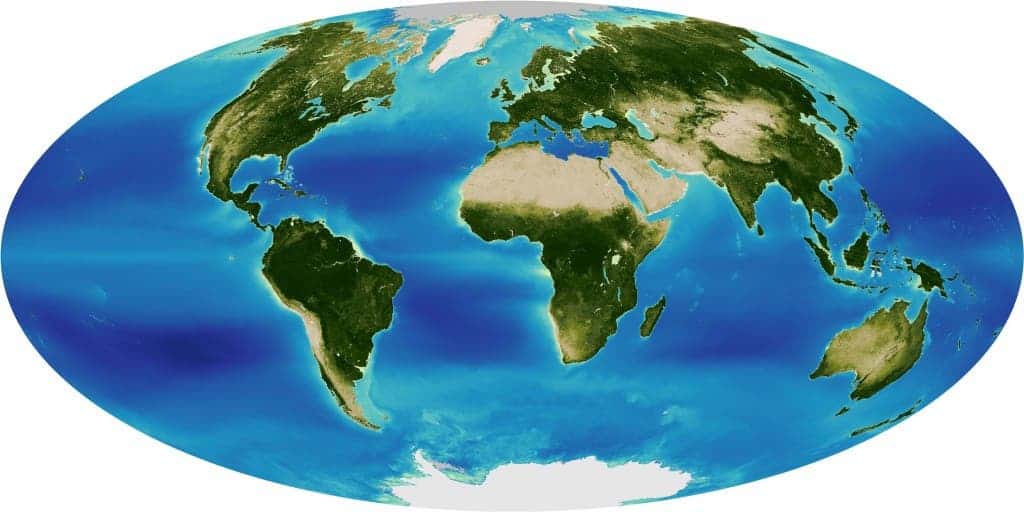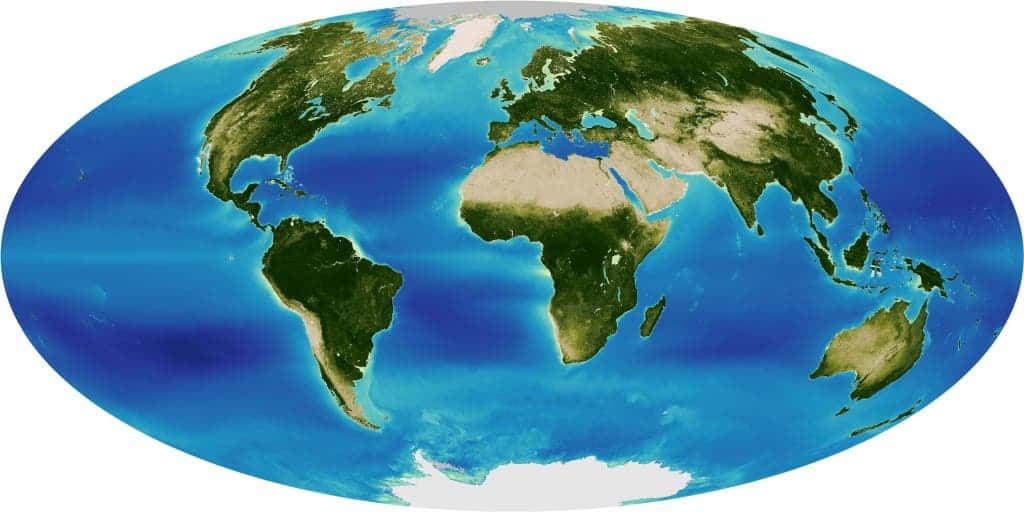
As you should know, chlorophyll is the biomolecule responsible for turning sunlight into energy; but what you probably don’t know is that a satellite, GeoEye’s OrbView 2 satellite, was launched with the main goal of monitoring chlorophyll levels on the planet. Another interesting fact about this particular satellite is that Google has exclusive online mapping use of it, but that’s another discussion.
But back to our chlorophyll map – it doesn’t only look at levels on land, but also analyzes areas where phytoplankton is most common, which is extremely important to know, as phytoplankton is at the core of all ocean life.
NASA’s Earth Observatory explains:
It’s the blooming and die-off of the phytoplankton that form the center of the oceanic food web…a direct indicator of the seas’ ability to support life.
It would have been extremely interesting to compare a map like this one to one made about a hundred years ago, to see how the chlorophyll levels have changed, or to be more blunt, dropped. The good news is that we have this data now, and maps like this one will be made in the following years to; hopefully, when we take a look at another map 10 years from now, there will be more green on it, not less.
Via maptd









